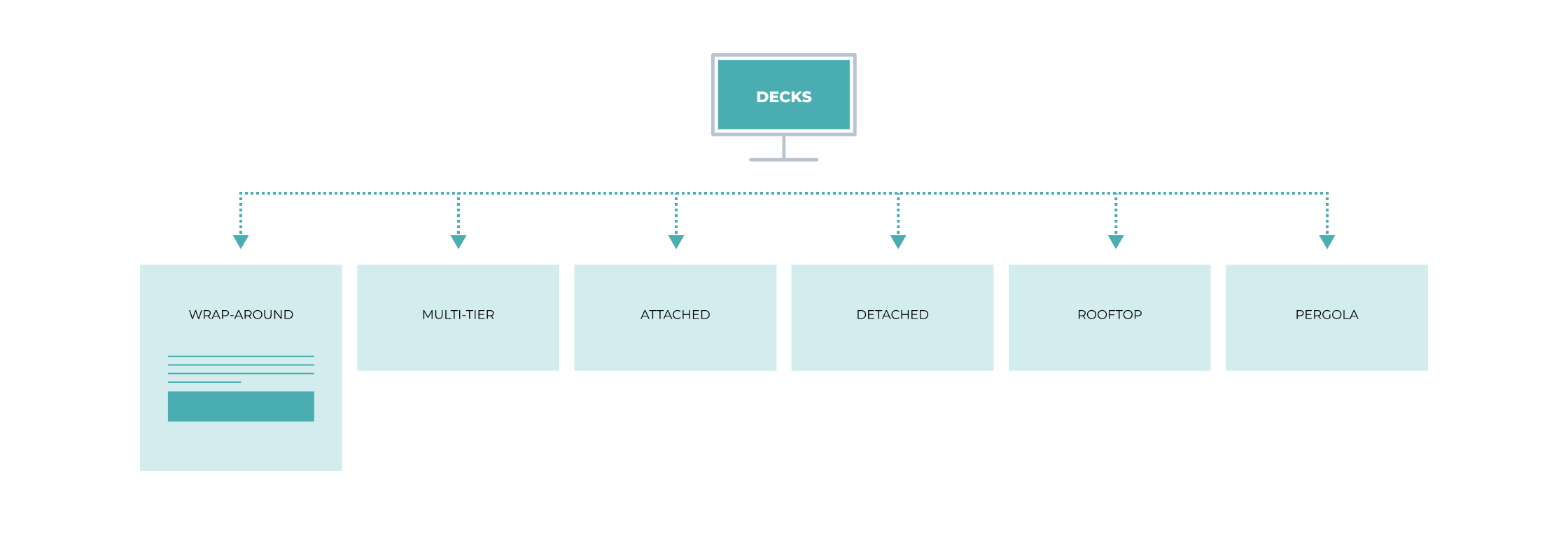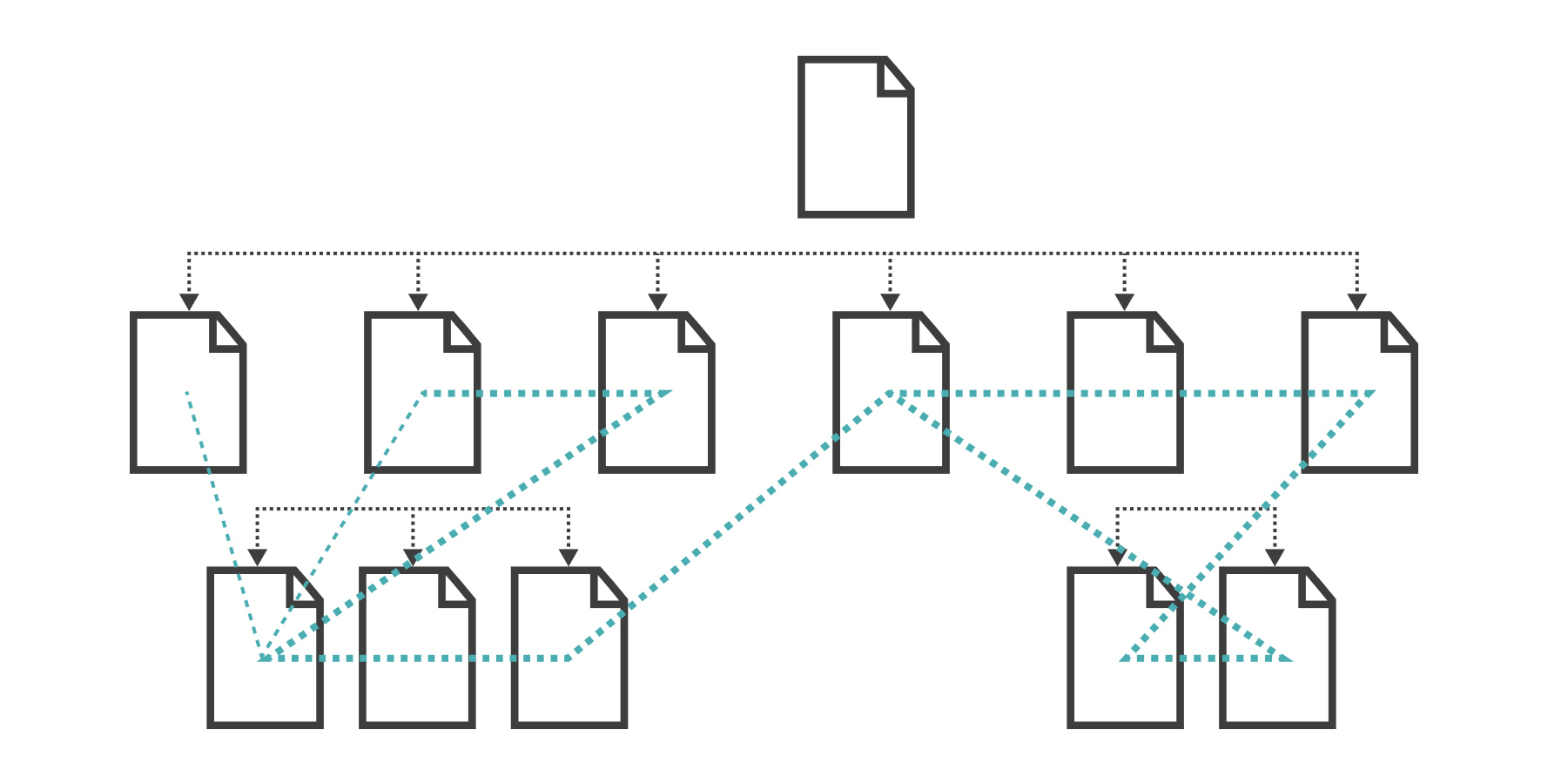
Pressed for time? Here are the highlights.
Saddled with a neglected website and an outdated SEO strategy, Krueger Brothers Construction was losing potential leads — lots of them — and missing out on the lion’s share of local revenue. We teamed up with them to drive serious results.
Up 109% in Traffic
A 109% YOY increase in organic traffic.
Up 69% in Leads
A 69% YOY increase in organic leads.
Top 10 Rankings
New top 10 rankings for 31 out of 35 targeted service-specific, bottom-funnel keywords.
$2.3M in Deals
$2.3 million in won/pending deals attributed to organic traffic from 4/1/22 to 8/31/23.
Untapped Potential
Let’s say you want to upgrade your Colorado home with a wraparound deck. How do you get started? If you’re like most people, you’ll probably head over to Google and fire out a few searches, starting with the million-dollar question: “How much does it cost to build a deck in Colorado?”
Within milliseconds, a flurry of local companies appears on the first page. Just like that, a universe of potential partners has appeared in your mind, composed of the companies that are best loved by Google. But what about the companies that don’t appear on page one? You know the answer already: They never even enter your mind.
Krueger Brothers Construction (KBC), a leading general contractor in Colorado Springs, was facing this exact problem. They do outstanding work on all sorts of outdoor living projects: decks, roofs, patios, you name it. Unfortunately, all of that fantastic work was being buried by a handful of brands with stronger SEO strategies.
Problem-Solving
Imagine you’re calling the shots at KBC. You don’t just want to know that you’re missing out on organic traffic and conversion opportunities, right? You want to know why — and more importantly, how to fix it.
The Why
Our team at Magneti (the Magnetians, as we’re known to ourselves) identified two key issues:
- Due to KBC’s outdated SEO strategy, users rarely discovered the site through organic search, and…
- The few that did were confronted with a confusing site design.
The How
Because we didn’t want the conversion potential from a flood of new users to evaporate due to outdated web page designs, we decided to tackle the issues in reverse order using a simple, phased approach:
- Enhance the aesthetic flow of the website, then
- Strengthen SEO visibility for each service area, starting with bottom-funnel intent and working upwards.
Drawing Them In
From the moment a user lands on your site, they should gravitate toward conversion. They should be guided, not pushed, in the right direction. In short, conversion should feel like a celebration, not a command — and certainly not a chore.
With that premise in mind, we designed a new service page that seamlessly blended brand messaging, search-friendly language, and user-centric content with strategically placed CTAs.

A Scientific Method
If you’ve ever looked at an SEO report and felt a wave of confusion wash over you, you’re not alone. You may have looked at ever-fluctuating KPIs like keyword rankings, link velocity, and domain authority and wondered: Is this actually working? At a surface level, SEO seems enigmatic.
Beneath the surface, though, there’s an elegant science behind SEO. We at Magneti love to dive deep to answer that very question: Is this actually working?
For KBC, that’s exactly what we did.
Over the next several months, we built six secondary pages with a focus on mid-to-bottom-funnel topics that were related to the core service area. For example, connected to the “Deck Builders” service page, you’d find topics like “Wraparound Decks,” “Rooftop Decks,” and “Pergolas.”

We created these pages with three SEO-specific aims in mind:
- Capturing more long-tail traffic
- Enhancing the site’s topical relevance
- Improving contextual internal link flow within core pages
Capturing Long-Tail Traffic
Remember the Google search we referenced in Chapter 1, How much does it cost to build a deck in Colorado? This is a perfect example of a long-tail keyword. Short-tail keywords like “Decks” carry tons of traffic, but they’re nearly impossible to rank for. Long-tail keywords are more granular, so they generate less traffic — but there’s a very specific search intent behind them.
With this in mind, we created nine long-tail, deck-specific blog posts. By prioritizing long-tail keywords, we catered to the exact intent of users, and they rewarded us by flocking to KBC’s website.
Enhancing Topical Relevance
Beneath all of the complex algorithms, Google has one goal: serving the searcher. It wants to offer the user relevant content, fast. So, if you want to drive people to your site, you need to build a universe of content that demonstrates your site’s authority for relevant keywords.
It isn’t enough to build high-quality content. You need to do it with precision. By focusing our production efforts on a web of tightly related keywords, we rapidly generated a great deal of authority for those search terms. The result? Skyrocketing SERP rankings and a foundation for sustainable growth.

Improving Internal Link Flow
If you’ve never heard the saying, let us be the first to introduce it to you: There are 1,000 ways to use a coconut. They can be used to make oil, milk, and cream. Their fibers can be used in flooring, doormats, and ropes. And, as you’ve probably heard, they can be eaten.
In other words, coconuts have lots of potential. In this regard, the pages on your site are like coconuts: they’re bursting with potential, and we want to squeeze every last drop of value out of them. Smoothing out internal linking is an excellent way to do that.
As we created service pages for KBC, we strategically added links to related core services. Two crucial benefits ensued.

The Technical Benefit
When you’re learning a new concept, your brain instinctively ties it into similar existing concepts. If you’ve taken a marketing course in college (or really, any class at all), you’ve likely said something like this: “Hey, this [new concept] is sort of like [old concept you already understand], right?”
Google does the same thing. It understands the internet, individual domains, and each of the pages on the website in terms of links. As we construct a network of intuitive internal links, we established topical connections that help Google better understand:
- What each page is about,
- Why it exists, and
- How important it is to the overall theme and objective of the site.
So, this type of link building is vital from a technical perspective. It’s equally important — if not more important — from a human perspective.
The Human Benefit
Internal links are like signposts, guiding a user to their end goal.
A user might land on KBC’s deck page, then follow a link for “wraparound decks” that brings them to an equally well-designed and well-written page — this time, focused specifically on the benefits of a wraparound deck. In turn, that page would teach them about the virtues of composite decking material and emphasize KBC’s expertise in all things composite. Before you know it, they’re filling out a contact form with a specific request for a composite wraparound deck.
That’s the power of strong internal linking. It captures every ounce of potential in each of your web pages, transforming the curiosity of your customers into action.
The Results
We’ll cut right to the chase. With our help, KBC attracted tons of new traffic, created countless leads, and most importantly, closed millions of dollars in new business.
Up 109% in Traffic
A 109% YOY increase in organic traffic.
Up 69% in Leads
A 69% YOY increase in organic leads.
Top 10 Rankings
New top 10 rankings for 31 out of 35 targeted service-specific, bottom-funnel keywords.
$2.3M in Deals
$2.3 million in won/pending deals attributed to organic traffic from 4/1/22 to 8/31/23.
Win With Us
Click the button below, and get an insights-driven, results-obsessed champion of growth in your corner.
(Seriously, imagine how fun it would be to click that button. You could press it so easily, with such a small amount of force. What’s the worst that could happen?)